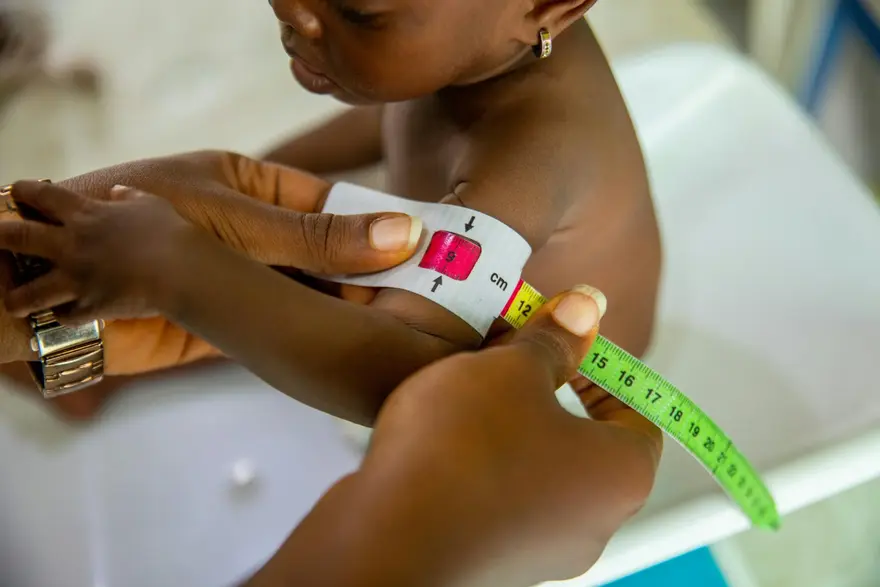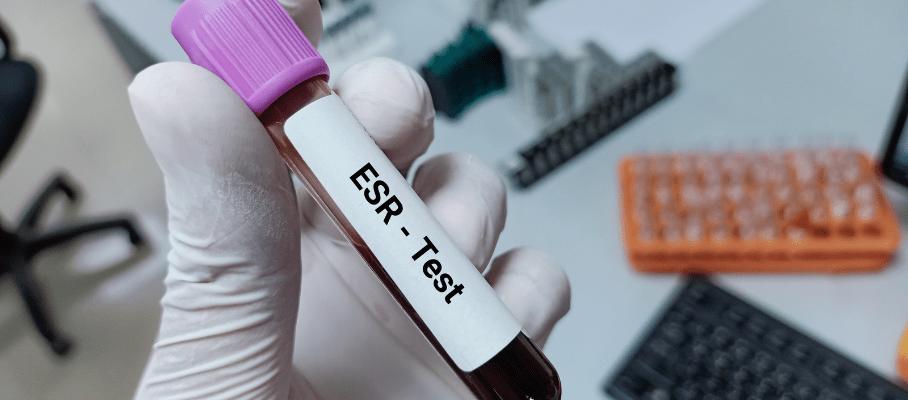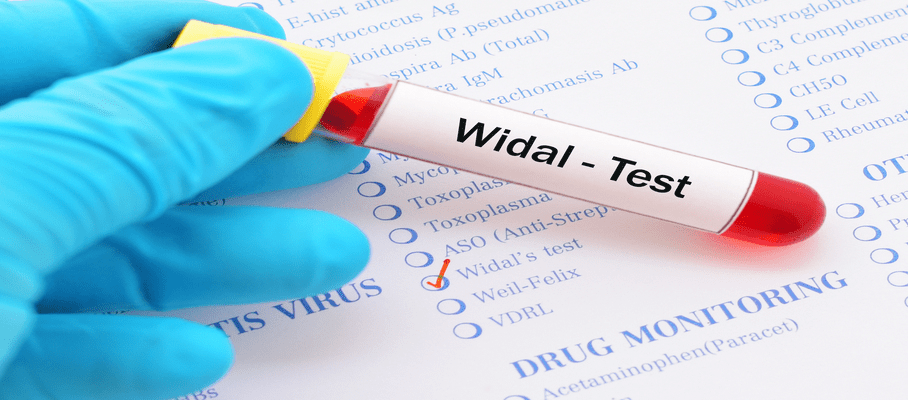Preventive Healthcare
Kwashiorkor: Causes, Symptoms, and Diagnosis
118 Views
0

What is Kwashiorkor?
Kwashiorkor is a severe protein-energy malnutrition disorder that results from a diet lacking in protein, despite having sufficient calorie intake. The term "kwashiorkor" comes from the Ga language of Ghana, meaning "the sickness the baby gets when the new baby comes," as it often occurs in older children who are weaned off breast milk when a new sibling arrives. Kwashiorkor leads to oedema (fluid retention), causing swelling in the abdomen and extremities. It also affects various bodily functions and can result in life-threatening complications if not addressed promptly.
Who Does Kwashiorkor Affect?
Kwashiorkor primarily affects children aged 1-4 years in developing countries, particularly in regions where the staple diet relies heavily on carbohydrates like maize, rice, or cassava, with limited access to protein-rich foods. According to UNICEF, nearly 50% of all child deaths under the age of 5 are attributed to malnutrition, with kwashiorkor being a significant contributor. However, kwashiorkor in adults can also occur, especially in individuals with conditions that impair nutrient absorption, such as HIV/AIDS, or those experiencing severe neglect or substance abuse.
What Is The Difference Between Kwashiorkor And Marasmus?
While both kwashiorkor and marasmus are forms of severe malnutrition, they have distinct characteristics. The key difference between kwashiorkor vs marasmus lies in their causes and presenting symptoms. Kwashiorkor results from a diet deficient in protein but with adequate calorie intake, leading to oedema and fluid retention. In contrast, marasmus occurs due to an overall deficiency in calories and protein, resulting in severe wasting and muscle loss without oedema. Children with kwashiorkor may appear "puffy" due to fluid retention, while those with marasmus appear emaciated.
What Are the Symptoms of Kwashiorkor?
The hallmark symptom of kwashiorkor disease is oedema, causing swelling in the feet, legs, and abdomen. Other kwashiorkor disease symptoms include:
- Changes in skin pigmentation and texture, such as flaky, dry skin or dark patches
- Brittle, thin, or discoloured hair that easily falls out
- Fatigue and irritability
- Diarrhoea
- Loss of muscle mass
- Enlarged liver (hepatomegaly)
- Weakened immune system, making the child more susceptible to infections
What other complications can kwashiorkor cause?
If left untreated, kwashiorkor can lead to several serious complications:
- Stunted growth and developmental delays
- Frequent and severe infections due to a compromised immune system
- Anaemia due to protein deficiency affecting red blood cell production
- Shock and coma in advanced stages
- Increased risk of mortality
Prompt diagnosis and treatment are crucial to preventing these life-threatening complications.
What causes kwashiorkor?
The primary kwashiorkor disease causes is a diet that is severely lacking in protein, even though calorie intake may be sufficient. This protein deficiency can occur due to various factors:
- Poverty and Food Insecurity: In many developing countries, access to protein-rich foods like meat, fish, and eggs may be limited due to financial constraints. Families may rely heavily on staple foods like maize, rice, or cassava, which are high in carbohydrates but low in protein.
- Famine or Natural Disasters: During times of famine or following natural disasters, food scarcity can lead to an overreliance on low-protein emergency food supplies.
- Inadequate Weaning Practices: When infants transition from breast milk to solid foods, they may not receive enough protein if their diet primarily consists of carbohydrate-rich foods.
- Medical Conditions: Certain diseases, such as cystic fibrosis, coeliac disease, and HIV/AIDS, can impair nutrient absorption, leading to protein deficiency despite adequate intake.
- Neglect or Abuse: In some cases, kwashiorkor may result from caregivers failing to provide a child with a balanced, protein-rich diet.
Understanding these underlying causes is essential for developing targeted prevention strategies and ensuring early identification of children at risk.
How is kwashiorkor diagnosed?
Diagnosing kwashiorkor involves a comprehensive evaluation of the child's physical symptoms, dietary history, and medical tests.
- Physical Examination: Doctors assess the child for oedema, skin changes, and other characteristic signs of kwashiorkor.
- Blood Tests: Laboratory tests can measure serum albumin levels, which are typically low in kwashiorkor, and evaluate overall nutritional status.
- Dietary History: Caregivers are asked about the child's eating habits and food intake to identify potential protein deficiencies.
How is washiorkor treated?
Treating kwashiorkor disease requires a multifaceted approach that addresses the child's immediate nutritional needs while gradually reintroducing a balanced diet. The key components of kwashiorkor disease treatment include:
- Nutritional Rehabilitation: The child is given a specially formulated milk-based feed that is low in protein and sodium initially to prevent electrolyte imbalances. The protein content is gradually increased over several weeks as the child's condition improves. This process helps the body adapt to the reintroduction of protein and reduces the risk of refeeding syndrome.
- Micronutrient Supplementation: Children with kwashiorkor often have deficiencies in essential vitamins and minerals. Supplements such as vitamin A, zinc, and iron are provided to support recovery and boost immune function.
- Treating Infections: Due to their weakened immune systems, children with kwashiorkor are more susceptible to infections. Antibiotics may be prescribed to treat any existing infections and prevent further complications.
- Monitoring Fluid Balance: As oedema resolves during treatment, the child's fluid intake and output are closely monitored to prevent dehydration or fluid overload.
- Addressing Underlying Causes: In cases where kwashiorkor results from food insecurity or inadequate weaning practices, healthcare providers work with families to develop long-term solutions and provide education on proper nutrition.
In severe cases, hospitalisation may be necessary to ensure close monitoring and intensive care. With proper treatment, most children with kwashiorkor make a full recovery, though some may experience long-term effects on growth and development if malnutrition occurred during critical periods of growth.
How can kwashiorkor be prevented?
Kwashiorkor disease prevention requires a multi-pronged approach that addresses the underlying socioeconomic and educational factors contributing to protein deficiency:
- Improving Access to Protein-Rich Foods: Governments and international organisations can work to improve food security and ensure that families have access to affordable, protein-rich foods.
- Promoting Proper Weaning Practices: Healthcare providers and community health workers can educate caregivers on the importance of introducing protein-rich foods during the weaning period.
- Monitoring Growth and Development: Regular check-ups and growth monitoring can help identify children at risk of malnutrition early, allowing for timely intervention.
- Addressing Poverty and Inequality: Long-term solutions to prevent kwashiorkor must include efforts to reduce poverty, improve living conditions, and ensure equal access to resources.
What is the outlook for people with kwashiorkor?
With early diagnosis and proper treatment, the outlook for children with kwashiorkor is generally good. Most children make a full recovery and catch up on growth and development once they receive adequate nutrition. However, if kwashiorkor occurs during critical periods of brain development, some children may experience long-term cognitive deficits. Additionally, children who have suffered from kwashiorkor may be more susceptible to chronic diseases later in life, such as obesity, diabetes, and cardiovascular disease. Therefore, ongoing monitoring and support are essential to ensure the best possible outcomes.
Conclusion
Kwashiorkor is a severe form of malnutrition that can have devastating consequences if left untreated. By understanding the causes, symptoms, and diagnostic process, healthcare providers and caregivers can work together to identify and treat children affected by this condition promptly. Equally important are efforts to prevent kwashiorkor by promoting access to protein-rich foods, educating communities on proper nutrition, and addressing the underlying socioeconomic factors that contribute to malnutrition. If you suspect that your child or someone you know may be suffering from kwashiorkor, it is crucial to seek medical attention immediately.
At Metropolis Healthcare, we offer comprehensive nutritional assessments and diagnostic testing to help identify and manage malnutrition. Our team of experts is dedicated to providing accurate, timely results and personalised care to support your child's health and well-being.























 WhatsApp
WhatsApp